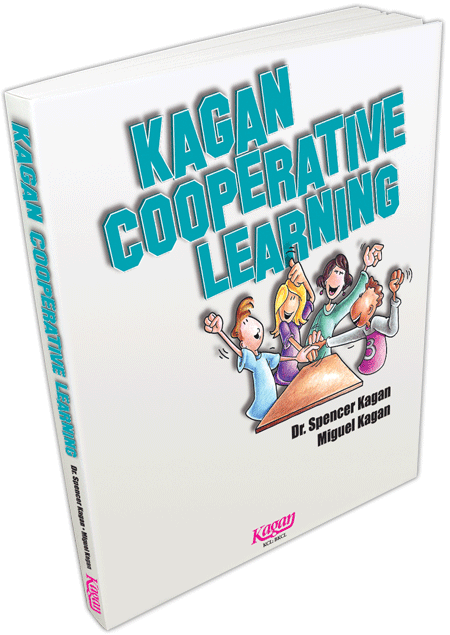
Kagan Cooperative Learning
| BKCLW • $44 | |
| Buy PDF eBook | |
Review of the book: Spencer Kagan and Miguel Kagan (2009). Kagan Cooperative Learning. San Clemente, CA: Kagan Publishing
By Neil Davidson
I am quite pleased to review the new book entitled Kagan Cooperative Learning. To give a sense of the wide-ranging scope of this book, let’s begin with the chapter titles, which are as follows:
Frequent questions
Why do we need cooperative learning?
What does the research say?
Why does cooperative learning work?
Seven keys for success
Structures
Teams
Management
Classbuilding
Teambuilding
Social skills
Basic principles (PIES)
Cooperative projects and presentations
Planning cooperative lessons
Assessment and grading
Motivation without rewards and competition
Classic cooperative learning
Each chapter is filled with substantive information. This may take the form of research syntheses, major concepts and principles, or practical applications, depending on the particular chapter and topic. The book provides numerous practical techniques based on a solid foundation of theory and research. There is an extraordinary collection of cooperative structures, plus many techniques for classbuilding, teambuilding, and social skills development.
Three of the chapters are new and make a unique and important contribution. The explanation of why cooperative learning works, aligns it with theory and research in motivation, classical and social learning theories, and theories of brain-based learning, individual differences, expectations, and the power of situations designed with cooperative or competitive goals.
The chapter on the need for cooperative learning is an original synthesis. It demonstrates how cooperative learning addresses the four major crises in American education: academic achievement, the achievement gap, race relations, and social skills issues.
The chapter on research on cooperative learning is tied in to the four major crises. In addition, it provides five powerful case studies showing the effects of the structural approach to CL in different schools or districts.
The text is clean, polished, and carefully organized, which makes it easy to locate desired information. There is both a subject index and an author index, which includes references to most of the major contributors to cooperative learning. There is a handy table called “Structure Functions,” which provides recommended uses for selected structures featured in the book. These uses are identified in the interpersonal arena (e.g. teambuilding and social skills) and the academic arena (e.g. procedural learning and thinking skills).
It is virtually impossible to learn to implement cooperative learning solely by reading about it. For educators who have attended CL workshops presented by Kagan trainers, this book will be a valuable reference and source of ideas. It puts together in one volume “everything you ever wanted to know” about the structural approach to cooperative learning. (Incidentally, I wish that the term “structural approach” had been included in the title.)
This new book on the structural approach to cooperative learning takes its place as the solid centerpiece of the varied Kagan programs for teachers. These include multiple intelligences, brain-friendly teaching, win-win discipline, character development, and building student achievement. Each of these is dealt with in a separate volume.
In conclusion this work is a major achievement. It is a book that thousands of educators have been waiting for. It is a great synthesis, revision, and update of Kagan’s (1992) fundamental book on the structural approach to cooperative learning. Those who liked the earlier edition will love this one. Anyone interested in cooperative learning can benefit from reading this volume, irrespective of their preferred school of thought about CL.

